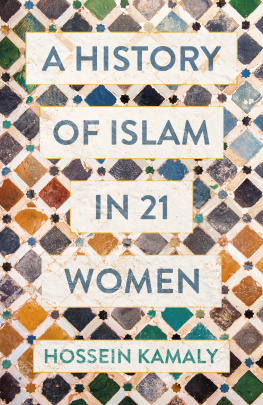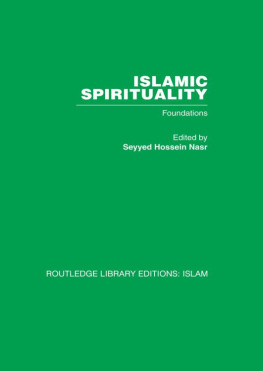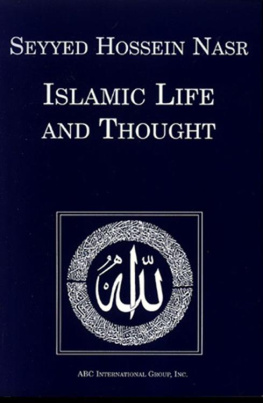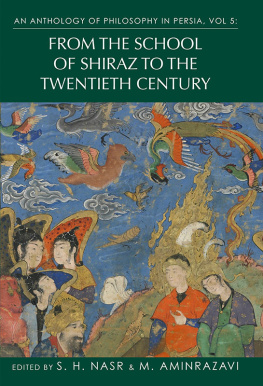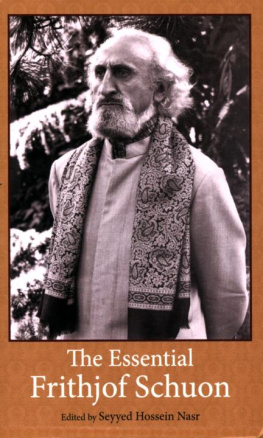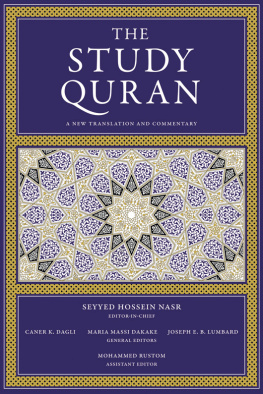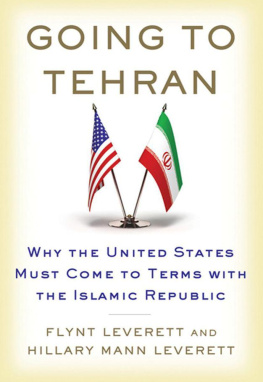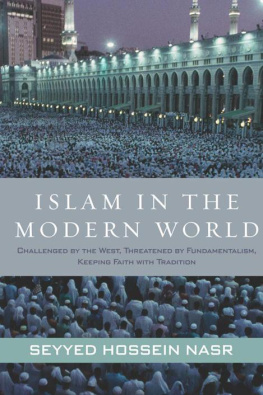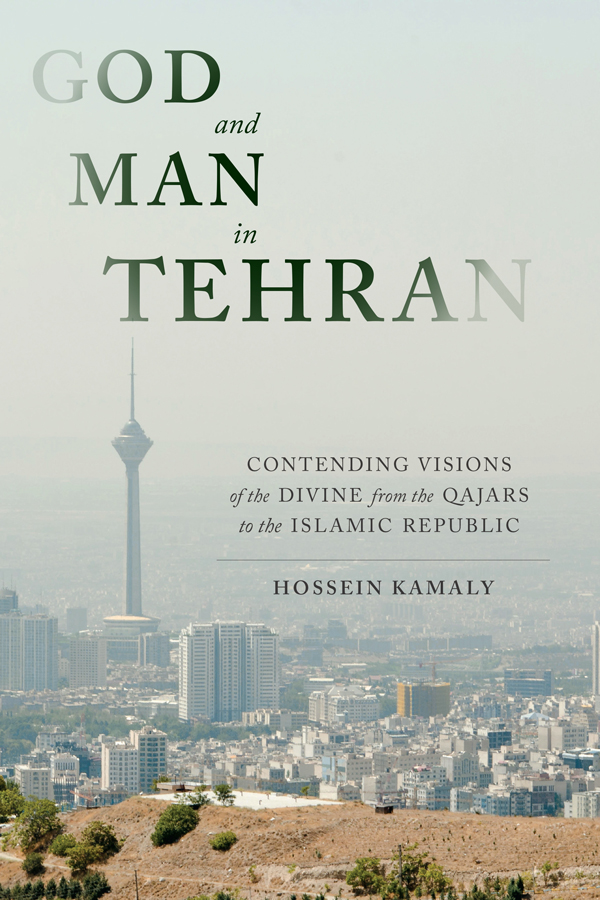Contents
Guide
Pagebreaks of the print version
God and Man in Tehran
GOD and MAN in TEHRAN
Contending Visions of the Divine from the Qajars to the Islamic Republic
HOSSEIN KAMALY
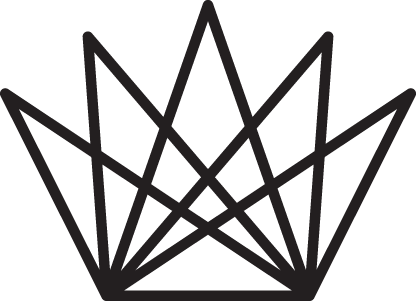
COLUMBIA UNIVERSITY PRESS NEW YORK
Columbia University Press
Publishers Since 1893
New York Chichester, West Sussex
cup.columbia.edu
Copyright 2018 Columbia University Press
All rights reserved
E-ISBN 978-0-231-54108-4
Library of Congress Cataloging-in-Publication Data
Names: Kamaly, Hossein, author.
Title: God and man in Tehran : contending visions of the divine from the Qajars to the Islamic Republic / Hossein Kamaly.
Description: New York : Columbia University Press, 2018. | Includes bibliographical references and index.
Identifiers: LCCN 2017031095 | ISBN 9780231176828 (hardcover : alk. paper)
Subjects: LCSH: God (Islam) | Tehran (Iran)History.
Classification: LCC BP166.2 .K225 2017 | DDC 202/.11095525dc23
LC record available at https://lccn.loc.gov/2017031095
A Columbia University Press E-book.
CUP would be pleased to hear about your reading experience with this e-book at .
Cover design: Jordan Wannemacher
Cover image: Kamyar Adl / Alamy Stock Photo
For my family
Mojdeh, Mohammad, Mitra, and Reza
With love
Contents
God, a word everyone knows, but one that carries different meanings for different people. For believers, it defines the ultimate concern. Nonbelievers, skeptics, agnostics, atheists, and others also employ the word, sometimes far less reverently, in exclamations of surprise or cries of despair. Sometimes this term refers to the object of faith, the fount of values, or even the very ground of being. The present book surveys the terrain of the discourse on God as it has emerged and continues to evolve in Tehran, the capital of Iran, from the 1800s until now.
For generations, God-related ideas and practices have intersected in expressions of shared faiths, forms of worship, charity, and service, bringing disparate peoples eye to eye and side by side. At the same time, conflicting perceptions of God and religion have split the people across fissures of creed, belief, class, gender, and other presumed hierarchies. Exploring these ideas provides a fresh perspective on social and intellectual history.
Irans 1979 revolution rendered trite any proclamations that you cannot understand that country, and in fact the region, if you do not take religion into account. Four decades later the challenging question lingers: How and why did a rapidly Westernizing, outwardly secular nation take such a sudden reversal in the name of Islam? Many observers have commented on the roots and results of that seemingly unlikely, even unthinkable, turn from the kings crown to the Imams turban, an untimely act of claiming the mantle of divine authority in the modern age (Amir-Arjomand 1988; Keddie 1983, 2006; Kurzman 2004; Mottahedeh 1985). Alarmed by the rise of various forms of religious-political activism around the world in recent decades, some have come to see Irans Islamic Revolution as the usher of a new global age of theological politics and advancing worldly agendas in the name of God. Without commenting on the current international situation or pretending to address practical political concerns about Iran, this book adopts a rather different perspective, focusing on intellectual ferment in one Iranian city: Tehran.
Tehran is one of the most densely populated metropolitan centers in the world today, sleeping over eight million souls each night. The city proper stretches seventeen miles north to south and sixteen miles east to west (Madanipour 1998). During work hours, hundreds of thousands of people commute to the heart of this urban colossus. Students, nurses, vendors, and laborers shuttle back and forth from the edge cities of Karaj, Varamin, and Shahr-e-Rey, or the more distant satellite towns of Malard, Meygun, and Robat-Karim. Tens of thousands more people travel a few times per week the hundred miles to Tehran from Arak, Qazvin, and Qom. As the capital of an internationally visible nation-state with enormous economic prospects and a rich cultural currency, the capital of Iran draws visitors from all over the world.
Compared with neighboring Turkeys Istanbul or Egypts Cairo, Irans capital bloomed late. The thirteenth-century geographer Yqt mentions ihrn as a nondescript hamlet near the ruins of the once-glorious ancient city of Ray or Raga. No major urban development was yet in sight when -Moammad Khan (d. 1797), a warlord from the Turkic Qajar clan, encamped there in the 1780s. Beckoned by tribal confederates, the Turkic Afshar and Qili clans in nearby territories (Khazeni 2009), the Qajar chieftain crowned himself in Tehran, had coins minted, and proclaimed his divinely ordained authority by drawing on the Shia expectations of messianic deliverance (Soucek 2001). Vast pasturelands and abundant water sources of the southern piedmont of the Alborz mountain range, lying in the shadow of the perennially snowcapped Mount Damavand, added to the places appeal. Seven Qajar monarchs reigned there for more than a century: -Moammad Khan (r. 17891797), Fat-Al Shah (r. 17971834), Moammad Shah (r. 18341848), Ner-al-Dn Shah (r. 18481896), Moaffar-al-Dn Shah (r. 18961907), Moammad-Al Shah (r. 19071911), and Amad Shah (r. 19111925).
Many of the issues related to the theme of this book still carry the marks of the not-so-distant past when Tehran served as capital of the Qajar dynasty, with the king and his court as well as the men of religious learning, the olam , at the center, along with throngs of merchants, artisans, and peasants on the periphery. The Pahlavi dynasty that abrogated Qajar rule in 1925 patterned itself as its opposite. While keeping the capital in Tehran, Re Shah (r. 19251941) and his son Moammad-Re Shah (r. 19411979) dedicated their efforts to rapidly modernizing the cityrevamping the legal, educational, health, and banking systems; constructing new roads, railways, and airways; building factories; and promoting a panoply of service industriesfrom chain stores to cinemas and nightclubs. Toppling the royal throne in 1979, the leader of the Islamic revolution, Ayatollah Rull Khomeini (ca. 19001989), resolved to establish the rule of God on earth, negating and denigrating at every step what he called the ungodly ( t ) ways of the Pahlavis. In retrospect, continuities have been no less significant than changes. The Islamic Republic has revived, rehabilitated, or reinvented many Qajar-era traditions, customs, and values that hinged on the prominence of the olam . Meanwhile, the process of nation-state building reached its apogeepolitically as well as ideologicallynot merely as an upshot of revolutionary mass mobilization but even more effectively in the light of intensified national solidarity galvanized by the long IranIraq War (19801989). After the bittersweet ending of that war, waves of economic, fiscal, political, social, and cultural revisionism have followed, bringing about a new world. As fragile and unstructured as it may still be, Tehrani civil society has grown and is becoming freer from the fetters of state control. At the core of these developments, there are deep-rooted notions about God, man, nature, and history. This book traces some of those roots.
I cannot overstress the point that the explorations presented in this book are historical, not theological, metaphysical, or religious, in both purview and purpose. The objective is neither to prove any theological propositions nor to disprove any metaphysical principles; neither to discover and expose the existence or nonexistence of primary truths or immutable essences nor to justify the dogmatic origins of concepts or delineate their consequences. Here is a disclaimer: Neither a polemic nor an apology, this inquiry does not settle age-old philosophical, theological, or religious scores. Rather, my goal here is to illustrate how certain ideas have been made, unmade, and remade within the geographic and historical confines of the city of Tehran.


